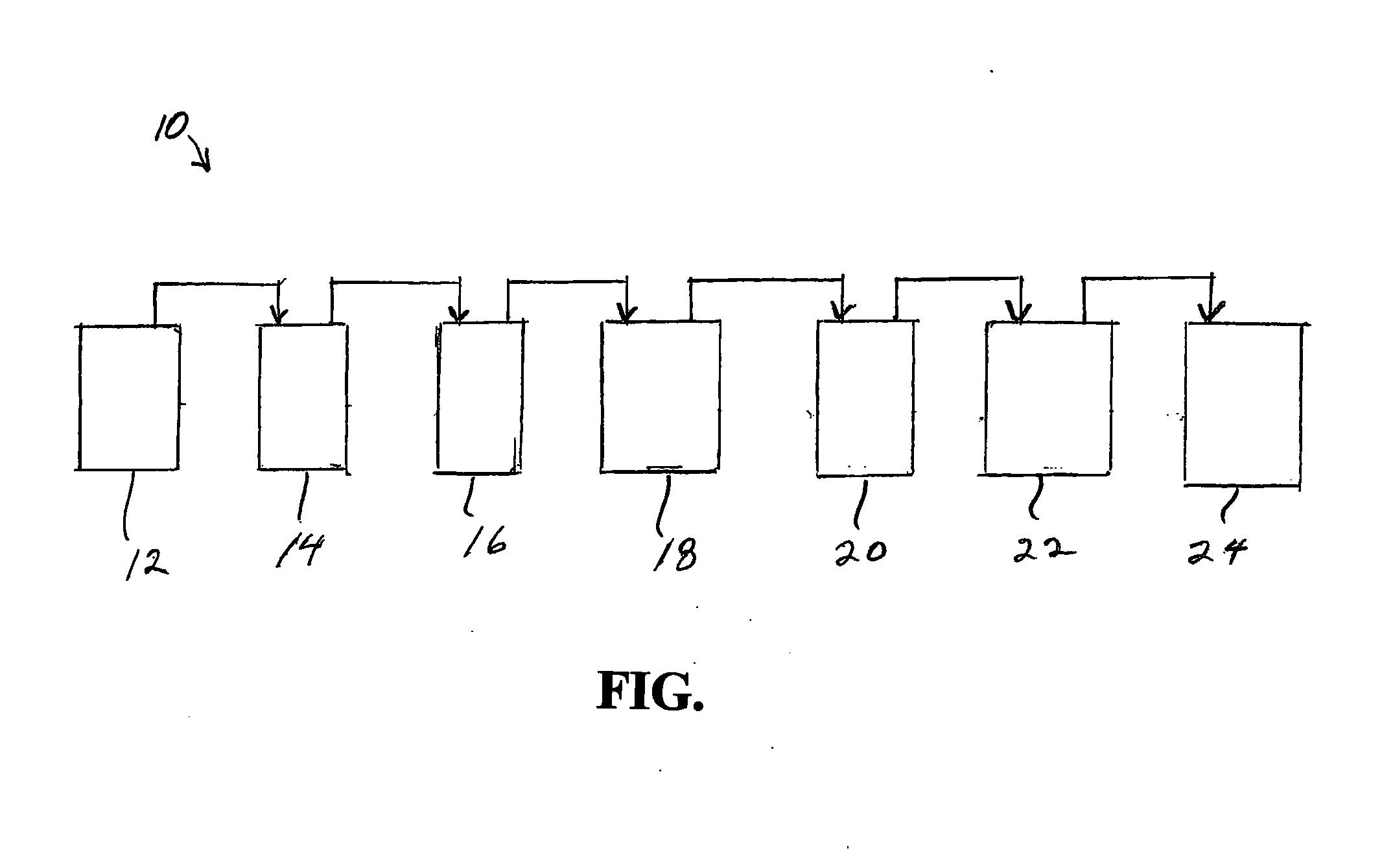Past attempts to commercially produce pasteurized shrimp and other shellfish products of acceptable market quality have largely failed due to problems with product yields, texture,
flavor,
odor, and / or appearance.
These and other problems substantially result from the extensive heat processes used to both render pasteurized seafood safe and to provide sufficient shelf-life for their subsequent distribution and sale.
These methods arguably can result in shrimp and other shellfish that have a favorable sensory quality, but such processes would also create conditions conducive for the growth of dangerous C. botulinum
bacteria, which produces a
neurotoxin causing
botulism if ingested.
Such processes are also likely to heat-shock C. botulinum spores which triggers
germination necessary for the
microorganism's growth.
Also, according to these regulations, any process that optimizes product sensory quality, for example to present the shellfish in a manner that is more appealing to potential purchasers of the shellfish, but at the same time increases
food safety risks in any way is not permitted.
Shrimp and certain other shellfish species pasteurized by conventional methods, but in a manner so as to produce refrigerated products possessing the desirable sensory attributes of high quality fresh seafoods, are typically unmarketable since such methods do not attain the levels of heat
exposure (non-proteolytic C. botulinum lethalities) necessary to achieve the
food safety requirements of the U.S. FDA.
For example, the practice of sub-lethal thermal processing of shellfish such as the blue crab, which, by definition is not
pasteurization, has been identified by the National Blue Crab Industry Association as hazardous and unacceptable with respect to sealed, refrigerated, blue crab meat.
When shrimp and other shellfish are pasteurized in accordance with requirements specified by the FDA, however, several unfavorable conditions are typically imparted to the shellfish.
For example, when raw shrimp, as well as many other shellfish species, are packed in a sealed container and heated to levels considered safe by the FDA, excessive shrinkage of the shrimp or other shellfish pieces occurs.
To make matters worse, this so-called purge is also often in the form of a cloudy or milky liquid containing
protein curd, which is unappealing to the
consumer, rendering the product unmarketable.
The
muscle of the shrimp and other shellfish also often toughens and becomes increasingly dense when processed according to the minimum
pasteurization processes required by FDA to meet
food safety requirements.
As a result, the meat when eaten has a rubbery texture that is difficult to fracture when chewed.
Another unfavorable condition that results from these known processes is that shrimp or other shellfish lose their characteristic odor and flavor when processed.
When temperatures during the
pasteurization process exceed those of the initial cooking stage, water and solubilized proteins are driven out of shrimp
muscle and into the cooking container, which coagulates producing a cloudy cook-out liquid of poor visual appeal.
Additionally, the thermal processes required for pasteurization commonly leave shrimp and other shellfish
muscle dehydrated, tough and significantly reduced in size.
Increasing the amount of water absorbed in raw or mildly pre-cooked shrimp and other shellfish through the use of extended soaks, either with or without additives, however, only exacerbates quality defects in the finished pasteurized product.
Such attempts to improve the yield of cooked shrimp and other shellfish through prolonged water
exposure prior to cooking is so pervasive in the industry that previous attempts to pasteurize these products may have been thwarted in part by consequentially high cook-out losses and related textural and appearance defects.
It has been found that this process does not produce a packaged product with an adequate
shelf life having a suitable texture and taste.
Partially cooking the shellfish in saturated steam or boiling water overcooks the exterior of the shellfish and under-cooks the center, resulting in both a tough and rubbery texture and poor appearance due to formation of
protein curd from un-coagulated proteins during subsequent pasteurization and storage, rendering the product unsuitable for commercial applications.
 Login to View More
Login to View More  Login to View More
Login to View More 







